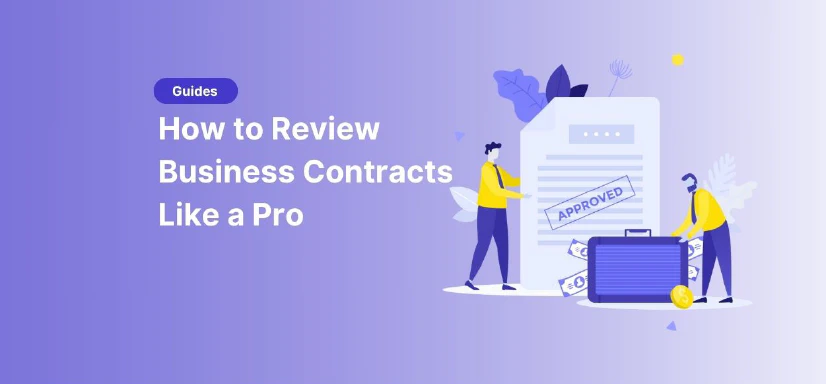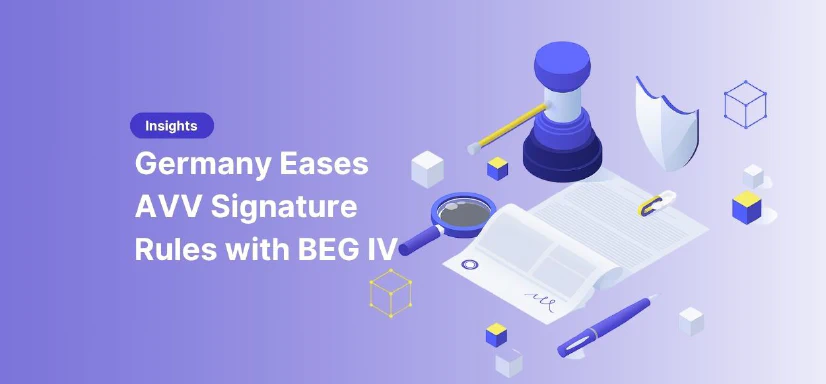
Simple Electronic Signature (SES)
9 min read
A Simple Electronic Signature, or SES, is simply the electronic version of your signature on paper. It’s the easiest and fastest way to sign everyday digital documents that don’t require high security. Although it’s widely accepted in the world, it’s not as secure as other types of electronic signatures. So, if you are not sure when to use or how to create a simple eSignature, this blog post is for you.
Table of contents
- What Is a Simple Electronic Signature?
- Pros and Cons of Simple Electronic Signature
- Acceptable Formats of Simple Electronic Signatures
- How to Create a Simple Electronic Signature
- Legality of Simple Electronic Signatures
- Why You Should Use fynk to Create and Receive Electronic Signatures?
- Summary
- Frequently Asked Questions
What Is a Simple Electronic Signature?
A Simple Electronic Signature (SES) is the most basic form of eSignature you can use to sign everyday transactions like a digital agreement. This type of e-signature does not require complex ID verification and usually knowing the email address of the signer is enough.
There is no strict encryption requirement such as ID identification or signature verification for using Simple Electronic Signatures. An email address, username, password, or in rare cases a unique access code is usually enough to confirm the signer’s ID. That’s why SES can be as simple as ticking an “I Accept” box, typing your name, or doodling your signature on a screen pad.
Although it isn’t very secure and can be easily replicated, SES is widely accepted throughout the world as an electronic representation of wet signatures. However, a low level of security does not mean they are not legally binding.
The acceptance of SES can change depending on regional regulations and the situation at hand. That being said, along with Advanced Electronic Signatures (AES) and Qualified Electronic Signatures (QES), SES is recognized by laws in many countries since it’s included in the ESIGN Act in the U.S. and eIDAS Regulation in the EU.
✨ Pro Tip: Use Simple Electronic Signatures in low-risk everyday tasks such as routine sales, basic agreements, and business transactions.
Here are some everyday examples of using Simple Electronic Signatures in everyday life:
- Clicking “I agree” to website terms when signing up.
- E-signing school permission slips for field trips.
- Confirming a package delivery by signing the carrier’s signature pad.
- Approving NDAs with clients using e-signature tools.
- E-signing health questionnaires before doctor’s appointments.
- Signing for internal documents in the workplace.
❗Remember: Simple Electronic Signatures might look like an innocent digital handshake, but still, you have to be careful what you are signing up for since they are legally binding in some jurisdictions and situations.


Pros and Cons of Simple Electronic Signature
Pros
- Convenience: Available for signing from anywhere.
- Time-saving: Speed up document processing and approval timelines.
- Cost-effective: Save on paper, printing, and postage expenses.
Cons
- Legal recognition: Some documents may require handwritten signatures for validity.
- Security Concerns: Easily can be forged if it does not require some sort of verification.
Acceptable Formats of Simple Electronic Signatures
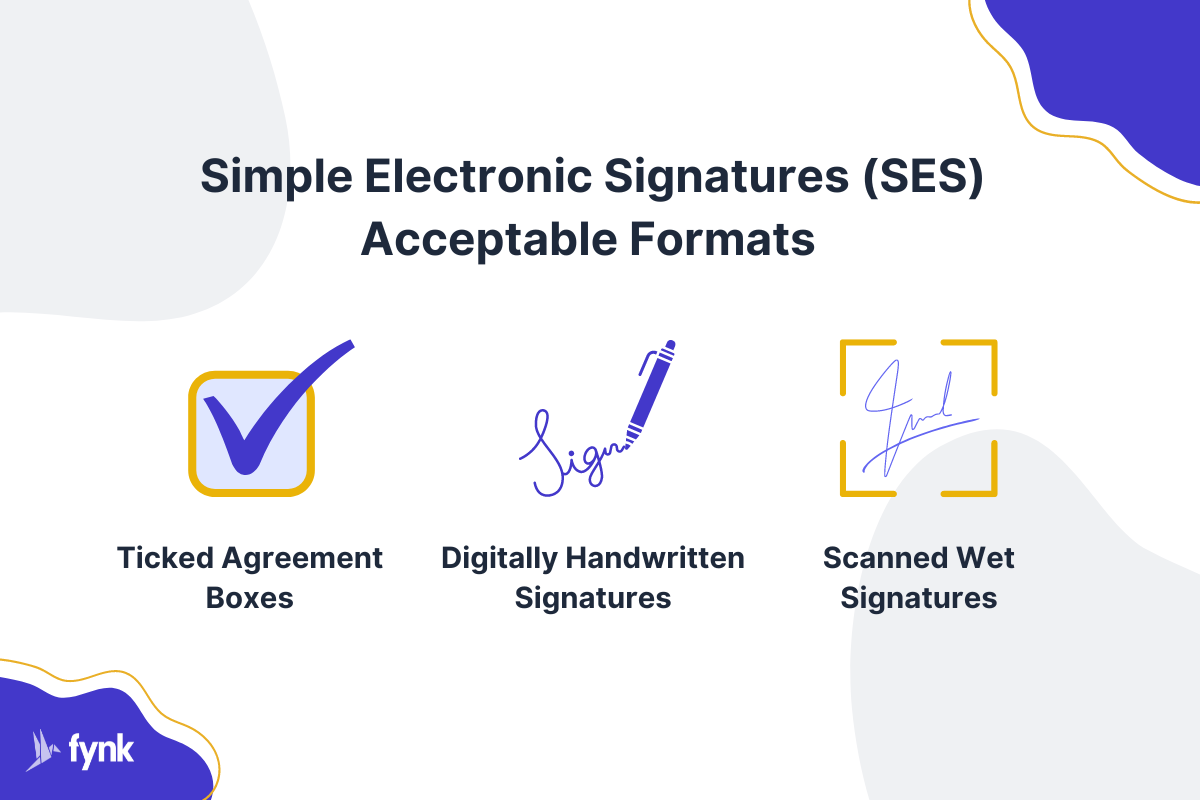

1. Ticked Agreement Boxes
Every “I confirm,” “I accept,” or “I contest” that you tick on digital platforms like websites or software are considered a Simple Electronic Signature.
They’re the simplest acceptable forms of SES and usually ask users’ consent or agreement to terms and conditions, privacy policies, or other legal agreements online.
Since it’s highly convenient and quick, it’s ideal for e-commerce transactions, software installations, and online registrations.
To use this type of electronic signature, you simply read the presented terms and then tick the corresponding checkbox to indicate your acceptance. This recorded action serves as proof of agreement.
2. Digitally Handwritten Signatures
Digitally handwritten signatures are the mimics of your real wet signature, only drawn on electronic devices using your finger or stylus on a touchscreen.
You can use this form of SES mainly for verification, for example when you sign for a package delivery or approve a document using a tablet.
3. Scanned Wet Signatures
If you sign a document by hand on paper and then scan it to create a digital version, you use a scanned wet signature.
This method is commonly used in situations where a physical signature is initially needed, but digital submission is preferred or necessary.
For example when you sign contracts, legal agreements, or official forms and still have to send them using email or upload them on a website.
This format keeps the traditional look of a handwritten signature while allowing for electronic processing and storage.
Alternatively, you can scan only your signature and then add it as an image using a placeholder to the digital documents in PDF or Word format.
Sign
any
Document in Less than
a Minute.
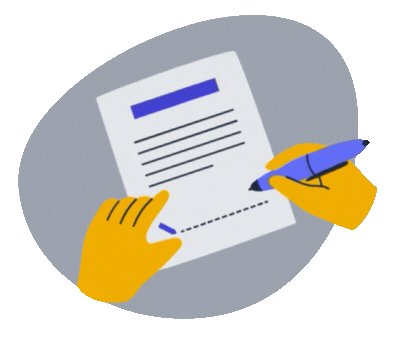
How to Create a Simple Electronic Signature
You have two options to create your simple eSignature and sign your documents electronically:
1. Using Simple Word Processing Software
Use tools like Microsoft Word or Google Docs to create your simple eSignature by:
- Typing your name in a stylish font that resembles your handwriting
- Drawing your signature using an e-pen, mouse, or a touchpad
In Microsoft Word
In Microsoft Word, select “Draw” from the top menu. Adjust the pen’s colors and size, and draw your signature. Then hit “Esc” to exit the drawing mode.
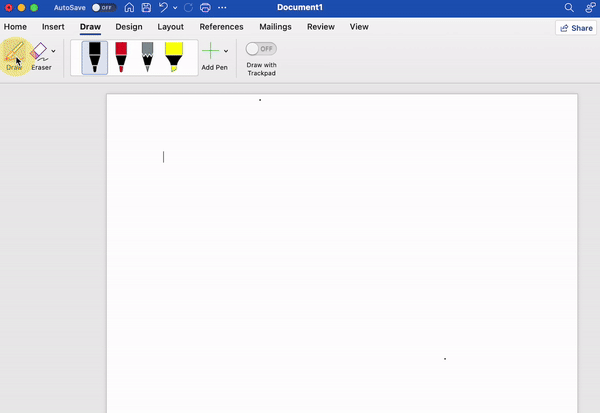

If you’re using the offline version of Microsoft Word, right-click on your signature and select “Save as Picture…” to store it for future uses.
In Google Docs
Similarly, on Google Docs’ top menu, click “Insert → Drawing → + New.” Select the text box, write your name, change the font to what you like, and hit “Save and Close.”
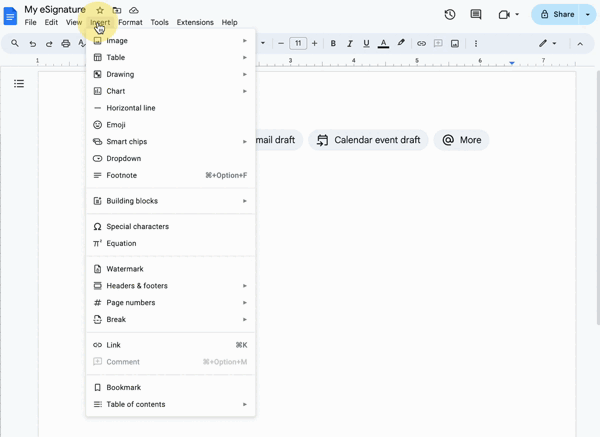

Right-click on your signature and choose “Save to Keep,” then from the right-side window, right-click on your signature and save it.
Alternatively, you can sign on paper, scan your wet signature, and save it as a PNG or JPEG image to your device.
Once you have your Simple Electronic Signature, insert it as an image to the document whenever you need to sign one.
🖋️ Note: This method can be tricky for moving and adjusting your signature on the document because you’re using an image, not a designated signature field. Also, the signature quality might be poor due to low resolution. Consider using eSignature platforms to avoid these issues.
2. Using an eSignature Platform Like fynk
The easiest way to create a Simple Electronic Signature is by using an eSigniture provider like fynk. Here’s how:
- Upload the document you need to sign into the platform.
- Place a signature block wherever you want signatories to sign.
- Click on “Parties and Signatories.“
- Enter the email addresses of the signers, including yourself if you need to sign the document.
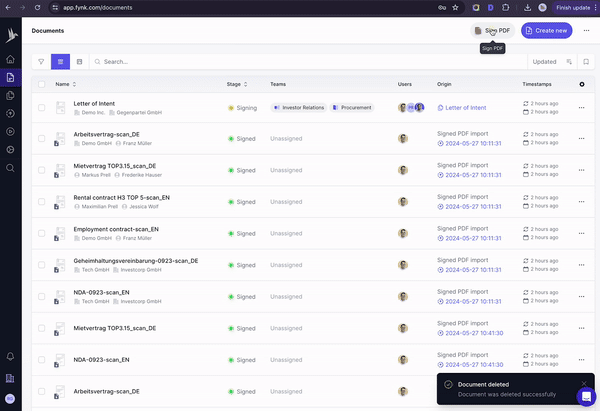

Then, the signers will receive an email with lead them straight to the document and you can easily sign it on the spot using one of these methods:
1. Draw ✏️
You can recreate your wet signature with the Draw Signature option. For computer users, a mouse or touchpad works for signing. For phones or tablets, use your finger or stylus.
If you want to clear the signing area, click/tap on “Start Over.”
Here’s what it looks like:
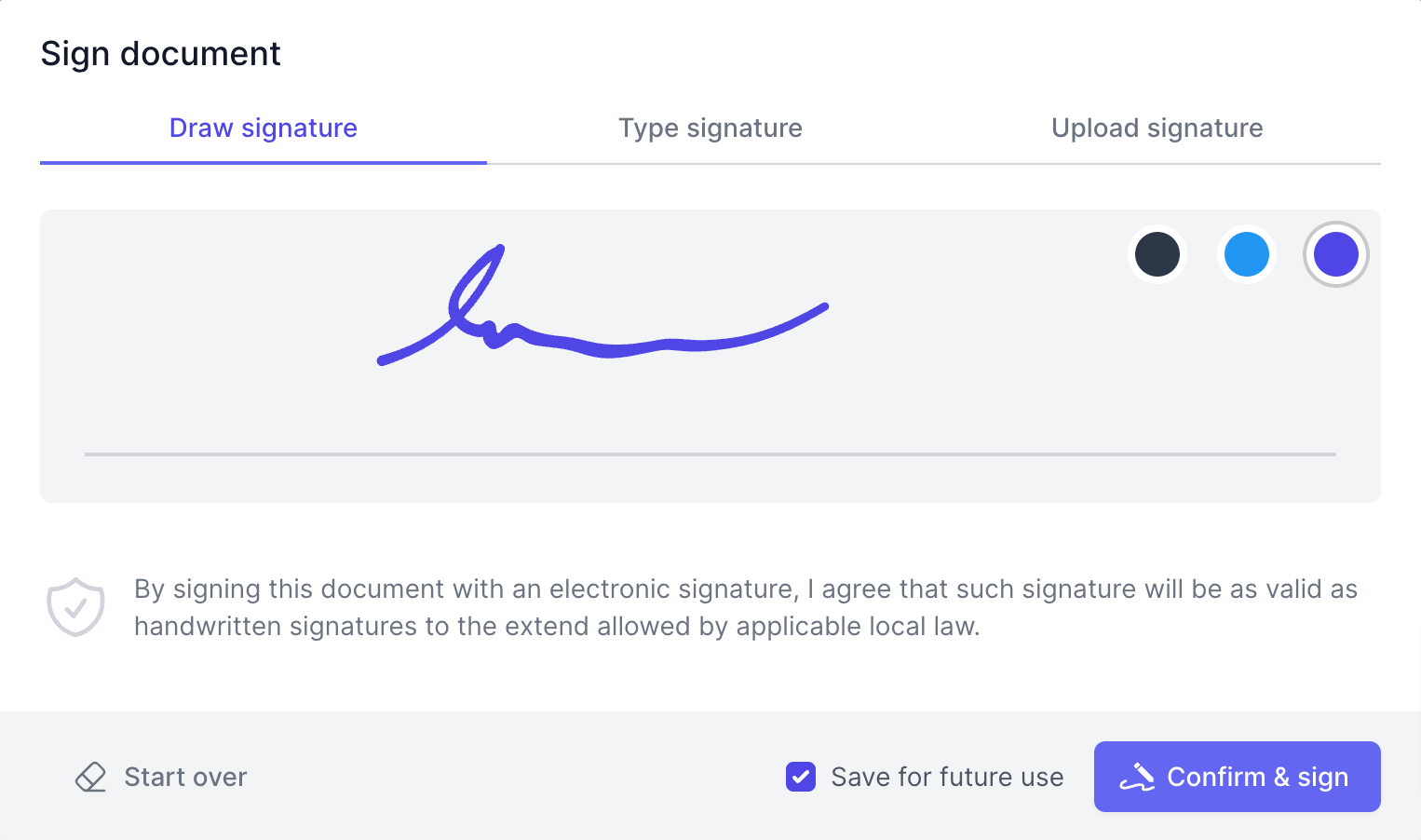

2. Type 🔠
The easiest way to create a Simple eSignature is to type your name in this box using the pre-applied script font.
Here’s an example of eSigning using text: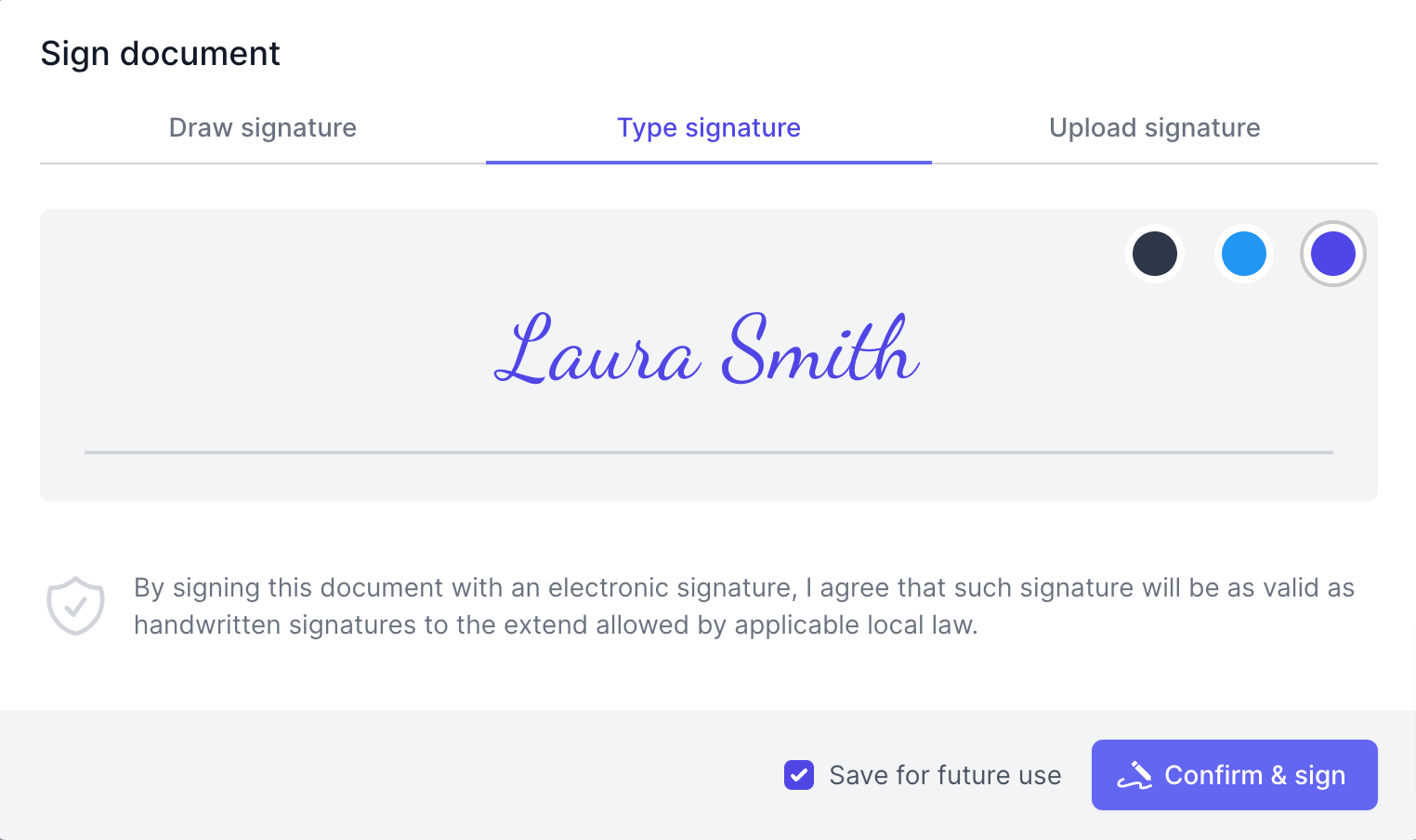
3. Upload 📤
Lastly, you can sign a document by uploading a scan of your signature or by opening your camera and taking a picture of it.
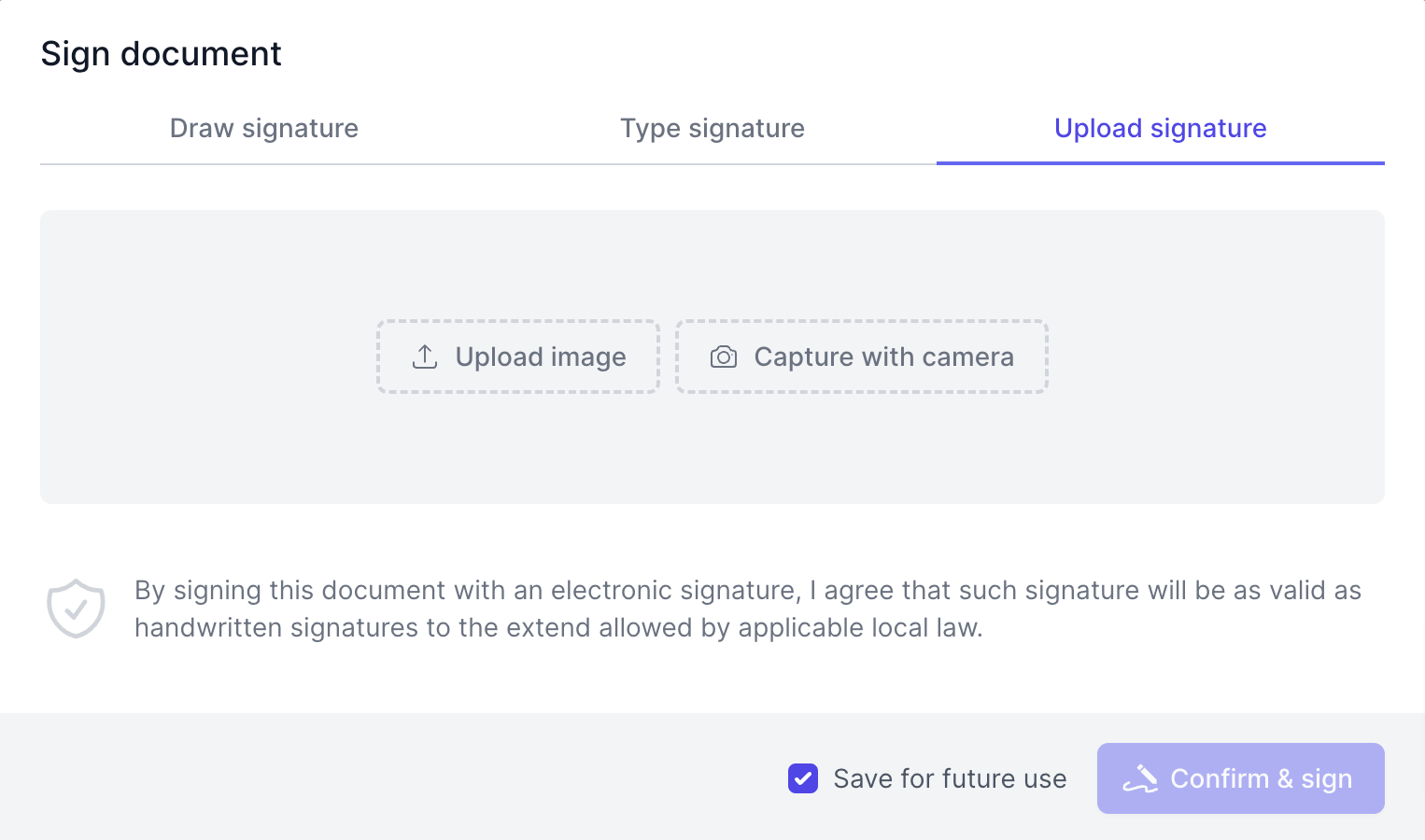

And it’s done! Your document is securely and easily signed.
Legality of Simple Electronic Signatures
Are Simple Electronic Signatures Legally Binding?
Yes, based on regulations and legal acts both in EU and US, Simple Electronic Signatures are indeed legally binding.
The European eIDAS regulations states:
While a high level of security is needed to ensure mutual recognition of electronic signatures, in specific cases, such as in the context of Commission Decision 2009/767/EC (10), electronic signatures with a lower security assurance should also be accepted.
In other words, electronic signatures can’t be rejected in legal proceedings just because they’re electronic or don’t meet high security standards.
Also, in the US laws (both the ESIGN Act and UETA) and in most other countries worldwide, the validity and legality of electronic signatures are acknowledged. They state that signatures can be as simple as a textual or graphic representation executed with the intention to sign.
This means that your Simple Electronic Signatures hold legal weight and you can effectively use it in various situations where your signatures are required, such as contracts, agreements, and official documents.
🖋️ Note: Legal documents don’t use the exact phrase “Simple Electronic Signature,” but they do mention “electronic signatures with the lowest level of security.”
Is It Legal to Use Third-party Apps for Simple Electronic Signatures?
Yes, according to article 51 of eIDAS regulations, you can typically use third-party apps for simple electronic signatures, as long as they follow the rules set by the law.
You need to make sure you have control over how your signature is created and that it’s connected to the document in a way that proves it’s truly yours. So, when choosing a third-party app for electronic signatures, make sure to choose one that’s trustworthy and meets legal standards for security and authenticity.
Why You Should Use fynk to Create and Receive Electronic Signatures?
Legally Binding
Although Simple Electronic Signatures are designed for low-risk tasks, it doesn’t mean that security should be overlooked. Using fynk you can ensure the signing process is safe and the signatory is actually the person who says it is.
Since fynk complies with eIDAS regulations (EU) and relevant US laws, all documents signed using the platform are legally enforceable and valid.
For simple eSigniture, you require the valid email address of the signers to be able to request the signature.
fynk also offers Advanced Electronic Signature (AES) and Qualified Electronic Signature (QES) which have an extra level of security such as standard authentication and ID verifications.
Also, once you finalize a document on fynk and send out a signing request for parties, no one can edit or adjust the document.
Simple and Flexible
Signing is easy with fynk. Sign from any device, whether it’s your computer, phone, or tablet. Choose your preferred signing method - type your name, draw your signature, or upload a scanned version.
fynk works with various document formats and lets you send documents to multiple signers at the same time.
Easy Workflow
fynk tracks all the steps of the eSigning process from easily assigning signing tasks to multiple recipients, setting deadlines, and tracking the signing progress in real-time.
No more back-and-forth emails! With fynk, It’s easy and secure to share documents with your team and ensure everyone stays on the same page.
Summary
Since Simple Electronic Signatures (SES) are the most basic form of signatures, you can use them in various everyday agreements or any other legal documents that are low-risk. They can be a scan of your actual document, or, as simple as a box that you tick on when signing on a website.
Although they might seem harmless, to avoid any chance of signature forgery, it’s better to use eSignature platforms that offer a simple and straightforward signing process.
Want to sign a document now? Try fynk — no credit card required.
Sign
any
Document in Less than
a Minute.
Frequently Asked Questions
- How do different countries regulate the use of SES?
- The regulations for SES vary widely by country. For example, the European Union's eIDAS regulation recognizes SES but distinguishes it from more secure forms, while the U.S. ESIGN Act provides a broad framework for electronic signatures.
- How is a simple electronic signature different from an advanced electronic signature?
- The main difference between a simple electronic signature and an advanced electronic signature lies in the level of security and verification. While simple electronic signatures can be as basic as a typed name or a scanned image, advanced electronic signatures use additional measures to verify the signer’s identity and ensure the integrity of the signed document. These measures might include cryptographic techniques and unique identifiers, making advanced electronic signatures more secure and legally robust.
- How can I make my simple electronic signature more secure?
- Using trusted electronic signature platforms like fynk that comply with legal standards and industry best practices can further ensure the security and integrity of simple electronic signatures.
- What are the limitations of simple electronic signatures?
- They may not provide strong evidence of the signer's identity or the authenticity of the signature. Additionally, some jurisdictions or industries may have specific regulations or standards that require more secure forms of electronic signatures, limiting the use of simple electronic signatures in certain contexts.



